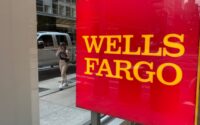Recession Risk Looms Large as Bond Markets Price in Steeper Rate Hikes Globally
(Bloomberg) — Forget about interest-rate cuts. The bond market is now pricing in a steeper path for monetary tightening by central banks around the world, raising the danger of recessions as policymakers struggle to bring inflation under control.
Most Read from Bloomberg
Just weeks ago, traders were expecting almost every developed-market central bank to cut benchmark rates within a year, the swaps market showed.
Now, rates mostly aren’t seen topping out until some time next year, and there are just two major monetary authorities — the Federal Reserve and Sweden’s Riksbank — that are expected to cut sometime between September 2023 and March 2024.
Prompting the shift: a raft of developments that showed Federal Reserve Chair Jerome Powell and a number of his counterparts may need to step up efforts to contain the worst cost-of-living surge in decades. Central banks again appear on the back foot as a resilient US job market, China’s post-pandemic reopening and a mild European winter combine to keep price pressures hot.
“It feels at this juncture that many central banks are still behind the curve and there’s a lot of catching up to do,” Catherine Yeung, Hong Kong-based investment director at Fidelity International, told Bloomberg Radio Wednesday.
Powell, in two days of testimony before the US Congress this week, warned that robust US data makes it likely the Fed’s peak rate will be higher than officials had penciled in in December. He also said he and his team may need to re-accelerate the pace of rate hikes at the March 21-22 meeting, to a 50 basis-point clip.
Economists reacted swiftly, with Goldman Sachs Group Inc. adding a quarter percentage point to its Fed peak-rate forecast, taking it to a 5.5% to 5.75% range — a percentage point higher than officials’ current target. Citigroup Inc. flipped its March call to a half-point move, and pushed the terminal-rate prediction to the same as Goldman’s.
Investors have also ramped up bets for how far the European Central Bank will have to raise borrowing costs. Initially driven by hawkish comments from key officials, the trade got another boost from unexpectedly strong recent readings for underlying inflation — a measure that strips out volatile components.
An increasing number of economists now sees the ECB deposit rate reaching 4%, from the current 2.5%. ECB Governing Council member Robert Holzmann, perhaps the panel’s most hawkish member, even suggested four more half-point hikes are in the pipeline, which would take the peak to 4.5%.
German two-year note yields on Wednesday hit their highest level since 2008. In the Treasuries market, the yield curve inverted to an extent unseen since a ruinous US recession of the early 1980s — with two-year yields exceeding those on 10-year Treasuries by well over a percentage point. That evokes the era of Paul Volcker’s draconian tightening.
The market is reflecting the fear that “the harder the inflation nut will be to crack, the more damage will be done to the economy it’s sitting on,” Kit Juckes, chief currency strategist at Societe Generale SA, wrote in a note Wednesday.
One dynamic investors and economists will need to mind is the internal debates at central banks over how high to take rates or — in the Bank of Japan’s case, how much of a scaling back of stimulus there should be.
Italian central bank chief Ignazio Visco has openly criticized making explicit comments on policy.
Europe’s Surging Inflation Bets Undercut Lagarde’s Rate Campaign
Divides are also deepening at the Bank of England, where Governor Andrew Bailey has insisted the UK economy is “evolving much as we expected it to” despite evidence of resilience in recent data.
“I would caution against suggesting either that we are done with increasing Bank Rate, or that we will inevitably need to do more,” Bailey said in early March.
While his colleagues Silvana Tenreyro and Swati Dhingra have pointed to cooling wage pressures and highlighted the need to take account of lagged effects from previous tightening, chief hawk Catherine Mann has feared inflation will require further rate rises from the BOE.
Traders have raised their bets on future UK hikes and are leaning toward rates increasing by a further 100 basis points, to a peak of 5% this year.
Not all central banks are following a more aggressive path.
The Bank of Canada on Wednesday kept rates unchanged for the first time in nine meetings. Still, officials kept the door open to further rate increases, reiterating that they’re willing to raise borrowing costs again if necessary.
The Reserve Bank of Australia also has signaled it will pause soon. Even so, it issued another quarter-point hike this week and flagged the necessity for further tightening.
In Sweden, traders see the Riksbank paring rates later this year. The nation’s economy is set to be the worst performing in the European Union this year, with the European Commission forecasting it to be the only one to experience a full-year contraction amid housing-market difficulties.
While some of the emerging world is in decent shape to tackle the turbulence of further Fed tightening ahead, there are somber growth views that abound worldwide: India slowing in the fourth quarter, Brazil contracting, Mexico slashing its growth forecast.
Emerging-market central banks have tried to strike a difficult balance, and are largely looking for the opportunity to pause tightening. For the major central banks in the US and Europe, however, the only way is up.
“We think central banks have more work to do,” Luigi Speranza, BNP Paribas SA chief economist, said in a report Tuesday. “We continue to believe that rate cuts by major central banks remain off the table for the rest of the year.”
–With assistance from Alexander Weber and Tom Rees.
Most Read from Bloomberg Businessweek
©2023 Bloomberg L.P.
[ad_2]
Source link


